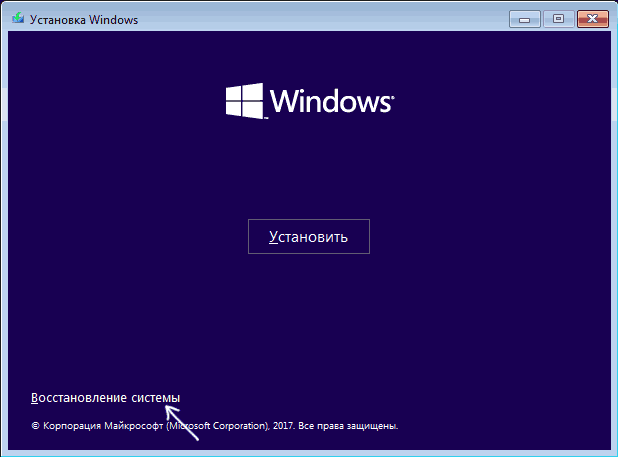Одна из распространенных ошибок на компьютерах и ноутбуках с Windows 10 — синий экран с сообщением «На вашем ПК возникла проблема, и его необходимо перезагрузить» с кодом остановки (ошибки) CRITICAL PROCESS DIED — после ошибки, обычно происходит автоматическая перезагрузка компьютера, а затем, в зависимости от конкретных обстоятельств — либо снова появление того же окна с ошибкой или обычная работа системы до повторного возникновения ошибки.
В этой инструкции — подробно о том, что может являться причиной появления проблемы и как исправить ошибку CRITICAL PROCESS DIED в Windows 10 (также ошибка может отображаться как CRITICAL_PROCESS_DIED на синем экране в версиях Windows 10 до 1703).
Причины ошибки
В большинстве случаев причиной ошибки CRITICAL PROCESS DIED бывают драйверы устройств — в случаях, когда Windows 10 использует драйверы из Центра обновлений, а требуются оригинальные драйверы производителя, а также другие неправильно работающие драйверы.
Случаются и другие варианты — например, с синим экраном CRITICAL_PROCESS_DIED можно столкнуться после работы программ для очистки от ненужных файлов и реестра Windows, при наличии вредоносных программ на компьютере и в случае повреждения системных файлов ОС.
Как исправить ошибку CRITICAL_PROCESS_DIED
В случае, если вы получаете сообщение об ошибке сразу при включении компьютера или входе в Windows 10, для начала зайдите в безопасный режим. Сделать это можно различными способами, в том числе, когда система не загружается, подробно об этом в инструкции Безопасный режим Windows 10. Также использование чистой загрузки Windows 10 может временно помочь избавиться от ошибки CRITICAL PROCESS DIED и выполнить действия для полного ее устранения.

Способы исправления, если удается войти в Windows 10 в обычном или безопасном режиме
В первую очередь рассмотрим способы, которые могут помочь в ситуации, когда вход в Windows возможен. Начать рекомендую с просмотра сохраненных дампов памяти, которые создаются системой автоматически при критических сбоях (к сожалению, не всегда, иногда автоматическое создание дампов памяти отключено. См. Как включить создание дампов памяти при сбоях).
Для анализа удобно использовать бесплатную программу BlueScreenView, доступную для загрузки на странице разработчика https://www.nirsoft.net/utils/blue_screen_view.html (ссылки на загрузки находятся внизу страницы).
В очень упрощенном варианте для начинающих пользователей анализ может выглядеть следующим образом:
- Запустите программу BlueScreenView
- Просмотрите файлы .sys (обычно нужны именно они, хотя в списке часть могут присутствовать hal.dll и ntoskrnl.exe), которые отобразятся в верхней части таблицы в нижней панели программы с не пустым вторым столбцом «Address In Stack».
- Используя поиск в Интернете, выясните, что это за файл .sys и какой драйвер он представляет.
Примечание: также можно попробовать использовать бесплатную программу WhoCrashed, которая может сообщить точное наименование драйвера, вызвавшего ошибку.
Если шаги 1-3 удались, то далее останется лишь решить проблему с идентифицированным драйвером, обычно это один из следующих вариантов:
- Загрузить файл драйвера с официального сайта производителя ноутбука или материнской платы (для ПК) и установить его.
- Откатить драйвер, если он недавно обновлялся (в диспетчере устройств правый клик по устройству — «Свойства» — вкладка «Драйвер» — кнопка «Откатить»).
- Отключить устройство в диспетчере устройств, если оно не является критичным для работы.
Дополнительные методы исправления, которые могут помочь в данном сценарии:
- Ручная установка всех официальных драйверов (важно: некоторые пользователи ошибочно считают, что если диспетчер устройств сообщает, что драйвер не нуждается в обновлении и «устройство работает нормально», то все в порядке. Это часто не так. Официальные драйверы берем с сайта производителя вашего оборудования: например, аудио драйверы Realtek скачиваем не с Realtek, а сайта производителя материнской платы для вашей модели или с сайта производителя ноутбука, если у вас ноутбук).
- Использование точек восстановления, если они есть в наличии и если недавно ошибка не давала о себе знать. См. точки восстановления Windows 10.
- Проверка компьютера на наличие вредоносных программ (даже если у вас есть хороший антивирус), например, с помощью AdwCleaner или других средств удаления вредоносных программ.
- Выполните проверку целостности системных файлов Windows 10.
Как исправить ошибку CRITICAL PROCESS DIED, если Windows 10 не запускается
Более сложный вариант — когда синий экран с ошибкой появляется еще до входа в Windows 10 без возможности запустить особые варианты загрузки и безопасный режим (если такая возможность есть, то можно использовать предыдущие методы решения в безопасном режиме).
Примечание: если после нескольких неудачных загрузок у вас открывается меню среды восстановления, то создавать загрузочную флешку или диск, как описано далее, не нужно. Вы можете использовать средства восстановления из этого меню, в том числе — сброс системы в разделе «Дополнительные параметры».
Здесь потребуется создать загрузочную флешку с Windows 10 (или диск восстановления) на другом компьютере (разрядность системы на накопителе должна совпадать с разрядность установленной системы на проблемном компьютере) и загрузиться с нее, например, используя Boot Menu. Далее порядок действий будет следующим (пример для загрузки с установочной флешки):
- На первом экране программы установки нажмите «Далее», а на втором, внизу слева — «Восстановление системы».
- В появившемся меню «Выбор действия» зайдите в «Поиск и устранение неисправностей» (может называться «Дополнительные параметры»).
- При наличии, попробуйте использовать точки восстановления системы (пункт «Восстановление системы»).
- При их отсутствии, попробуйте открыть командную строку и выполнить проверку целостности системных файлов с помощью sfc /scannow (как это сделать из среды восстановления, подробно в статье Как проверить целостность системных файлов Windows 10).
Дополнительные варианты решения проблемы
Если к текущему моменту никакие способы не помогают исправить ошибку, среди остающихся вариантов:
- Выполнить сброс Windows 10 (можно с сохранением данных). Если ошибка появляется после входа в систему, то сброс можно выполнить, нажав по кнопке питания, изображенной на экране блокировки, затем, удерживая Shift — Перезагрузка. Откроется меню среды восстановления, выберите «Поиск и устранение неисправностей» — «Вернуть компьютер в исходное состояние». Дополнительные варианты — Как сбросить Windows 10 или автоматическая переустановка ОС.
- Если проблема возникла после использования программ для очистки реестра или подобных, попробуйте восстановить реестр Windows 10.
При отсутствии решения могу рекомендовать лишь попробовать вспомнить, что предшествовало появлению ошибки, выявить закономерности и попробовать как-то отменить действия, которые привели к проблеме, а если это невозможно — выполнить установку системы повторно. Тут может помочь инструкция Установка Windows 10 с флешки.
CRITICAL_PROCESS_DIED — эта ошибка возникает, когда операционная система Windows не запускает или завершает процесс. Это может быть вызвано различными причинами. Ниже подробнее разберем, какие причины и решения могут быть.
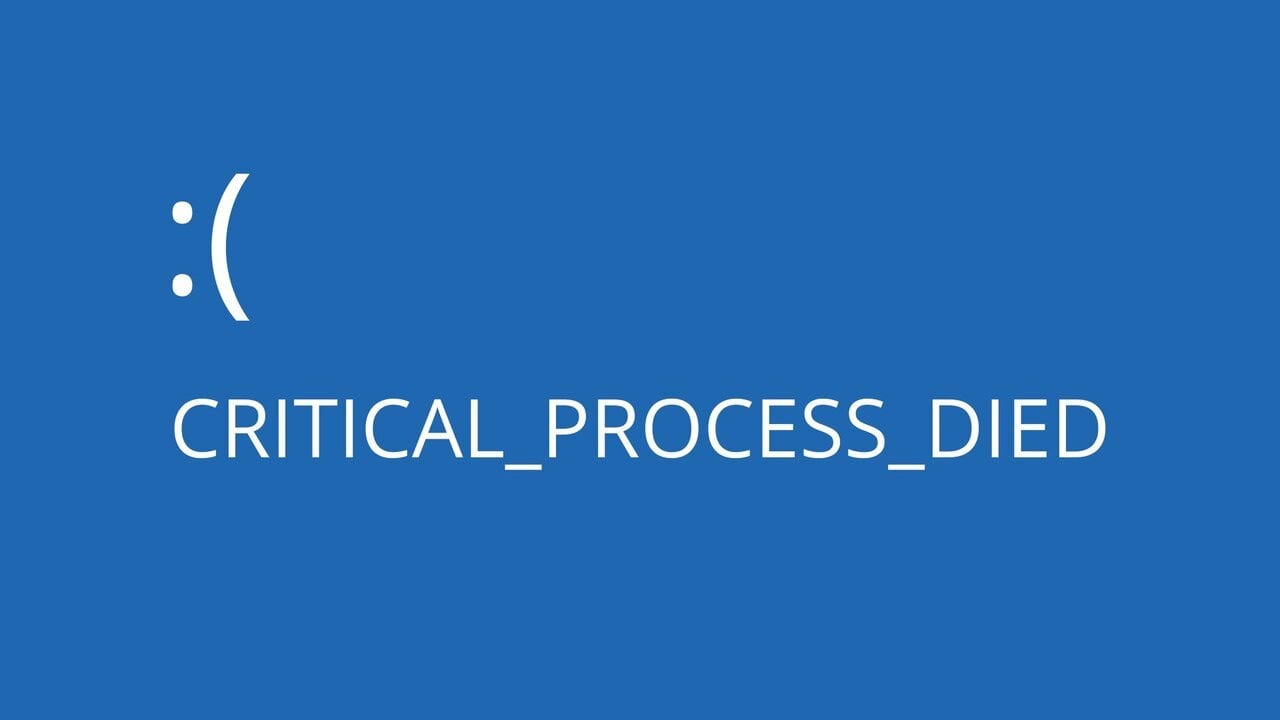
Источник: addictivetips.com / Ошибка critical process died
Причины
- Проблемы с оборудованием — неисправный жесткий диск, видеокарта или оперативная память могут стать причинами сбоев в операционке;
- Вирусное заражение — вредоносные программы могут повредить системные файлы и вызвать сбой в работе процессов;
- Некорректная установка обновлений — обновления могут содержать ошибки, которые могут быть причиной сбоев в работе системы;
- Конфликт программного обеспечения — некоторые программы могут конфликтовать друг с другом.
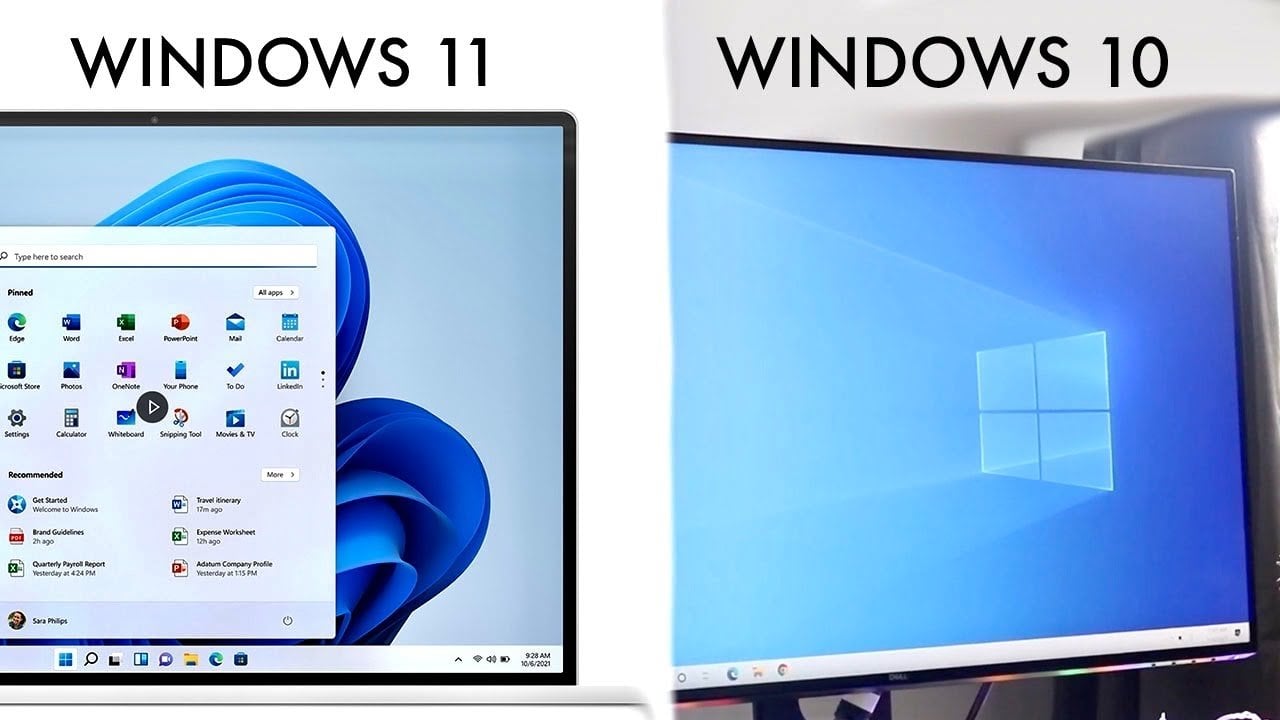
Источник: ytimg.com / Windows 10 и 11
Решения
Восстановление во время загрузки
Если ошибка CRITICAL_PROCESS_DIED возникает циклически и не позволяет загрузить рабочий стол, то будет запущено автоматическое восстановление. Для этого идем в дополнительные параметры. Если дополнительных параметров нет, попробуйте перезагрузить компьютер пару раз, пока не появится меню с выбором дополнительных параметров.

Источник: microsoft.com / Автоматическое восстановление
В этом меню можно выбрать один из следующих вариантов:
- Восстановление при загрузке — вариант позволит автоматически выполнить ремонт системы;
- Командная строка — может потребоваться для выполнения дополнительных действий по устранению ошибки;
- Восстановление системы — позволит откатить Windows к более ранней точке восстановления, когда ошибки еще не было;
- Восстановить образ с сохранением файлов — если у вас есть установочная флешка с Windows 10 или 11, вы можете совершить восстановление системы, сохранив все файлы;
- Удалить последнее обновление — например, ПК не загружается, можно попытаться удалить последнее установленное обновление. Оно могло вызвать ошибку.
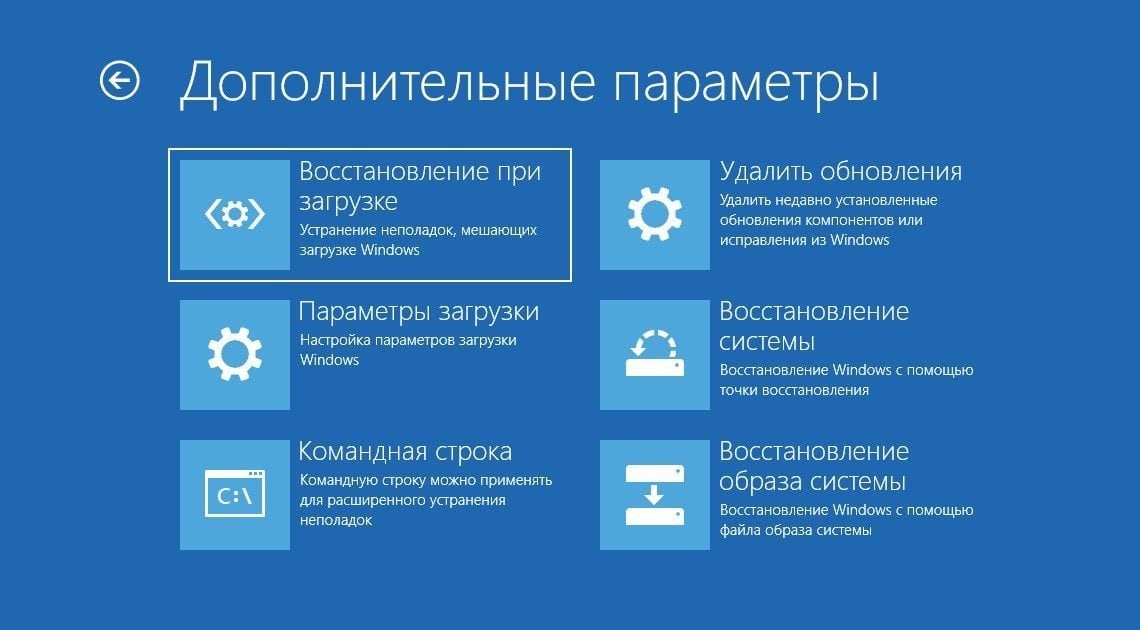
Источник: lifehacker.ru / Восстановление системы при загрузке
Проверка битых секторов и файлов на диске
Поврежденные системные файлы и битые секторы на диске могут быть причиной ошибки critical process died на Windows 10 и 11. Чтобы автоматически проверить целостность системы и наличие ошибок на диске, сделайте следующее:
- Запускаем командную строку от имени администратора;
- Вводим команду chkdsk c: /f /r, чтобы проверить диск на ошибки и исправить их (если возможно);
- Далее команда sfc /scannow, чтобы восстановить поврежденные файлы системы;
- Если предыдущие команды не помогли, введите команду DISM /Online /Cleanup-Image /RestoreHealth, для проведения более подробной проверки системы и запуска восстановления файлов.
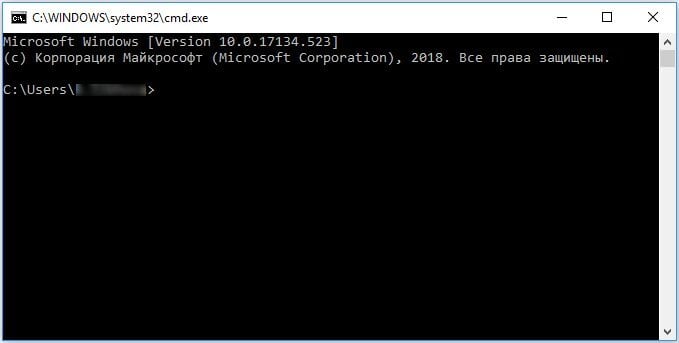
Источник: timeweb.com / Командная строка
Сканирование антивирусом
Ошибка CRITICAL_PROCESS_DIED может быть вызвана вредоносными программами. Они способны изменять файлы системы и процессы, и это приводит к сбоям в работе системы.
Для проверки компьютера на наличие вирусов, можно воспользоваться бесплатным антивирусом. Например, защитник Windows в режиме автономного сканирования или DrWeb, Zemana и другие сканеры.
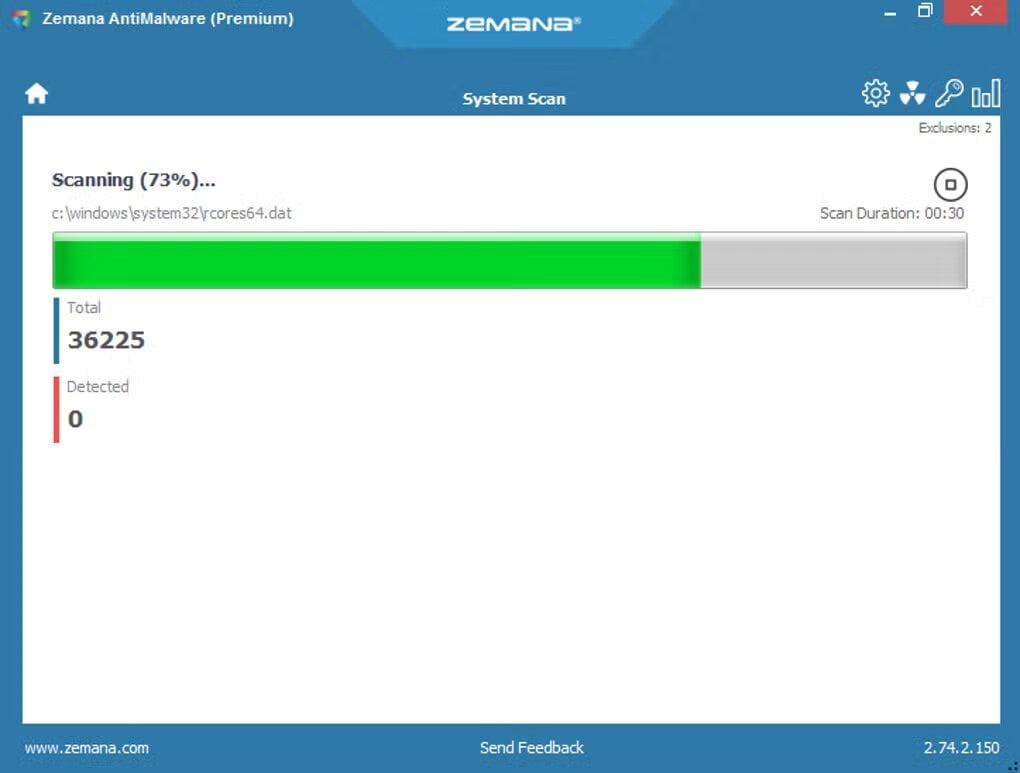
Источник: sftcdn.net / Антивирус Zemana
Обновление драйверов
Старые драйвера можно считать распространенной проблемой ошибки. Во время загрузки часто выскакивает critical process died Windows 10 и 11.
Чтобы проверить состояние драйверов нужно:
- Нажмите ПКМ на «Пуск»;
- Находим «Диспетчер устройств»;
- Просмотрите список устройств и обратите внимание на наличие желтого восклицательного знака рядом с каким-либо из них: если такой есть, то проблема с драйвером присутствует;
- Выберите правой кнопкой мыши устройство с восклицательным знаком;
- Воспользуйтесь пунктом «Обновить драйвер» в контекстном меню.
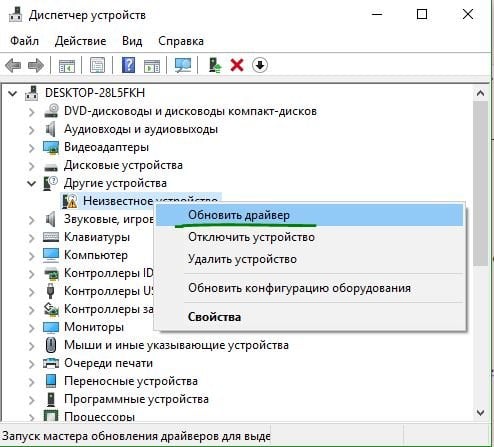
Источник: mywebpc.ru / Обновление драйверов
Для правильного обновления лучше всего посетить сайт бренда устройства. Там вы сможете найти самые свежие драйвера для решения своей проблемы.
Удаление обновлений
Бывает что CRITICAL_PROCESS_DIED высвечивается после того, как вы обновили систему. Тогда можно удалить последнее обновление. Это может помочь решить проблему.
Чтобы удалить обновления:
- Откройте «Параметры», далее — «Обновление и безопасность»;
- В разделе «Центр обновления Windows» выберите «Просмотр журнала обновлений»;
- Найдите последнее обновление и удалите его.
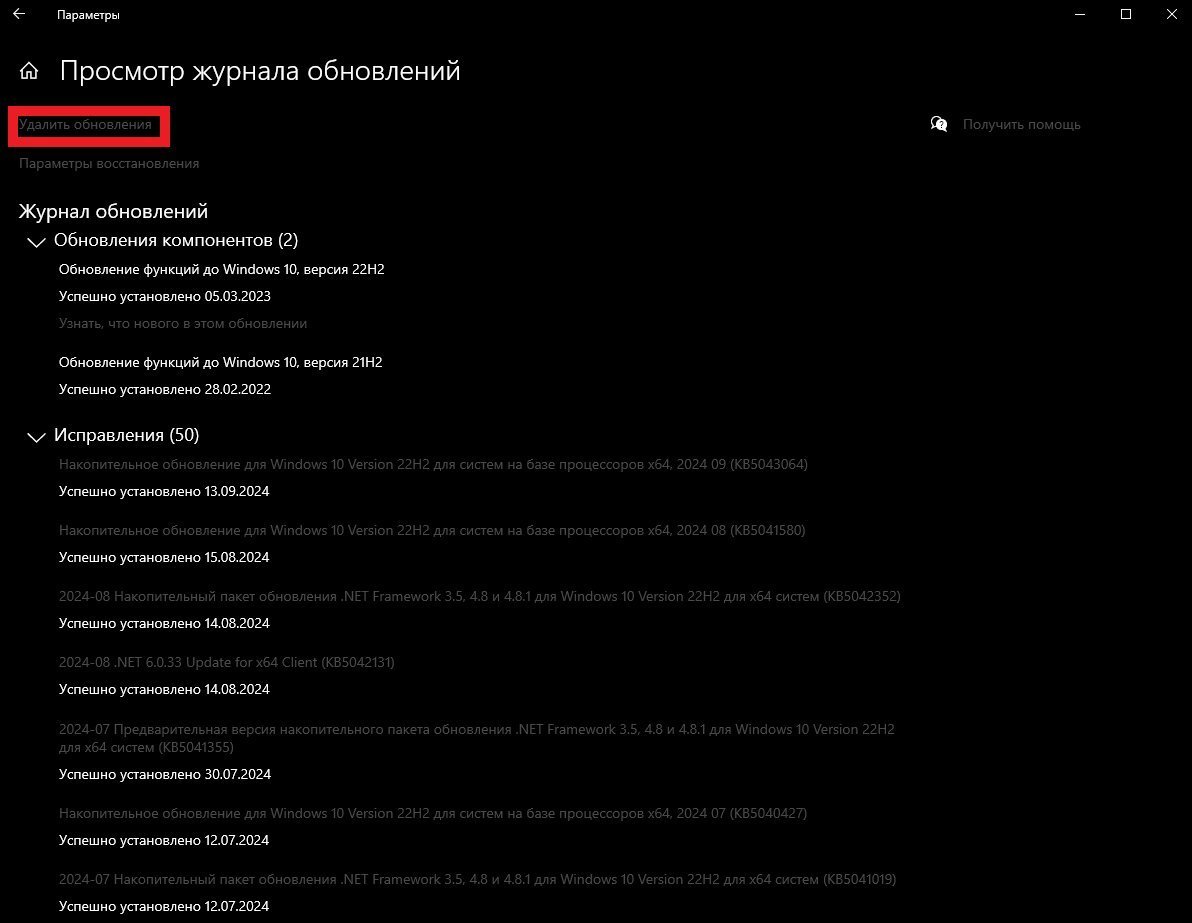
Скриншот: CQ.ru / Журнал обновлений
Чистая загрузка
Чистая загрузка — режим запуска Windows, которое задействует минимум программ, процессов и драйверов. Это может помочь определить, какое приложение или драйвер вызывает ошибку CRITICAL_PROCESS_DIED.
Чтобы запустить чистую загрузку:
- Нажмите клавиши Win + R;
- В появившемся окне пропишите команду msconfig;
- Перейдите на вкладку «Службы»;
- Установите флажок «Не отображать службы Майкрософт»;
- Нажмите «Отключить все»;
- Перейдите на вкладку «Автозагрузка»;
- Далее «Открыть диспетчер задач»;
- Во вкладке «Автозагрузка» отключите все элементы;
- Перезагрузите компьютер.
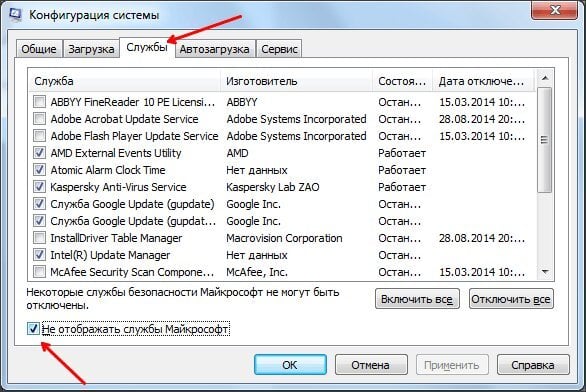
Источник: comp-security.net / Автозагрузка системы
Восстановление системы
При созданной точке восстановления можно откатить компьютер до появления ошибки CRITICAL_PROCESS_DIED.
Для этого:
- Откройте «Параметры»;
- Перейдите в раздел «Обновление и безопасность»;
- Выберите «Восстановление»;
- Следуйте инструкциям на экране.
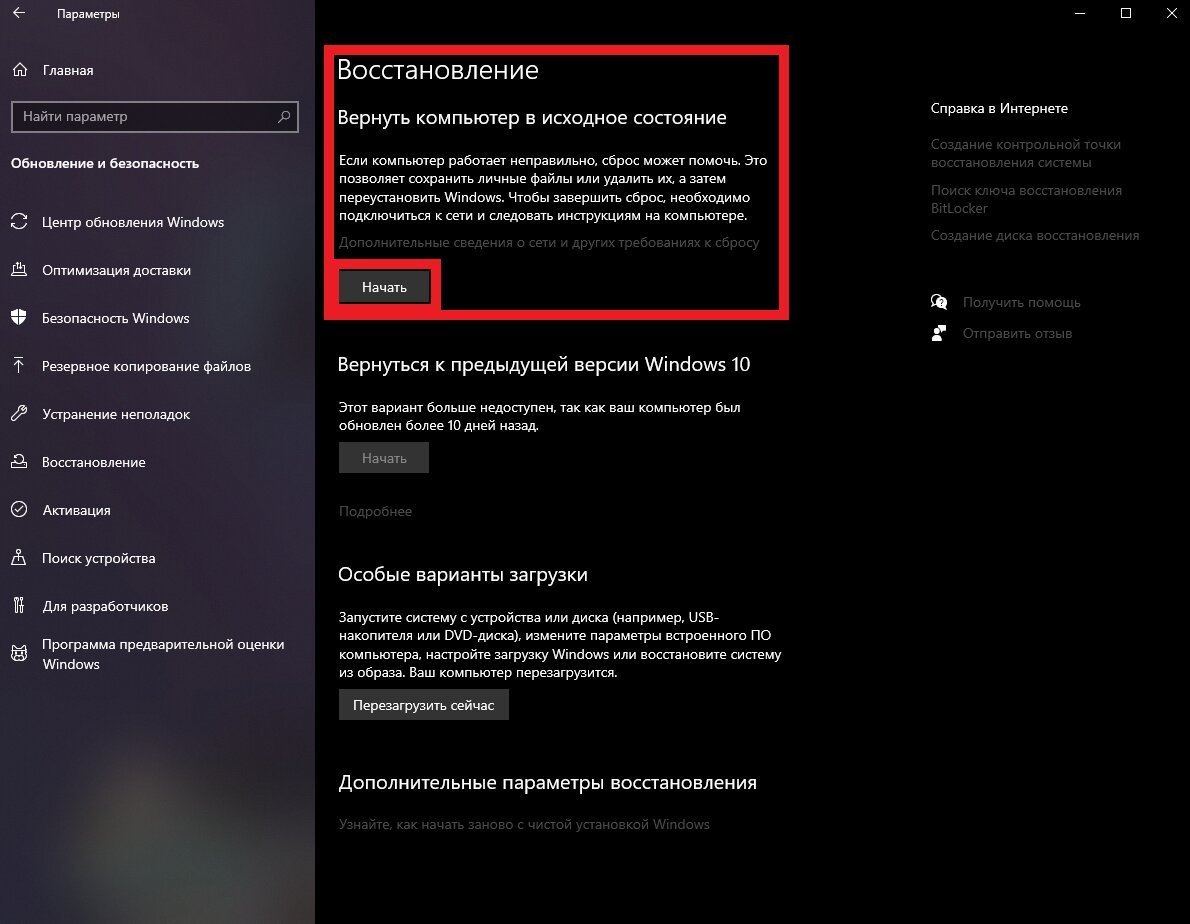
Скриншот: CQ.ru / Восстановление системы
Отключение спящего режима
Если ошибка critical process died windows появляется после пробуждения компьютера или ноутбука, можно попробовать отключить спящий режим.
Спящий режим — создает автоматически точку сохранения текущей работы, отключает монитор и все компоненты как HDD, процессор, видеокарта. При нажатии любой кнопки на клавиатуре Windows 10 запускает все компоненты устройства, загружает сохраненную работу и включает монитор.

Источник: bisv.ru / Спящий режим
Windows 10
Для отключения:
- Нажмите сочетание клавиш Win + I;
- Выберите «Система»;
- Перейдите в раздел «Питание и спящий режим»;
- Справа вы увидите две графы: «Экран» и «Спящий режим». Вы можете отключить эти функции или увеличить промежуток времени до перехода в спящий режим и выхода из него.
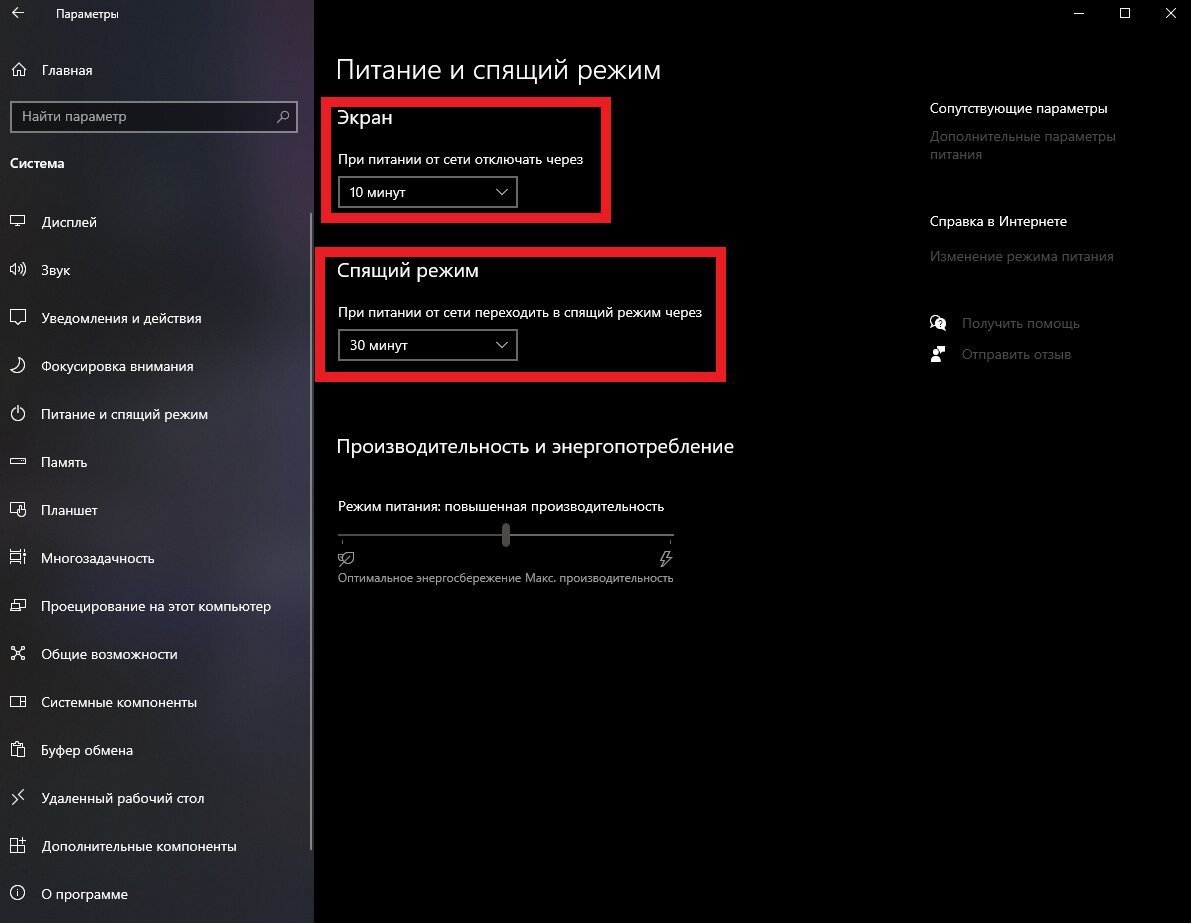
Скриншот: CQ.ru / Раздел спящего режима на Windows 10
Windows 11
На Windows 11 действия похожи:
- Откройте «Параметры»;
- В разделе «Система» выберите «Питание»;
- Справа найдите графу «Экран и спящий режим»;
- Во всех пунктах выберите «Никогда».

Источник: mywebpc.ru / Раздел спящего режима на Windows 11
Обновление BIOS
Чтобы обновить BIOS, нужно зайти на сайт производителя вашего компьютера и найти там последнюю версию BIOS для вашей модели. Затем следовать инструкциям на сайте или в этом руководстве.

Источник: asus-service-pro.ru / Обновление БИОСа
Обновление BIOS — это сложный процесс, который может привести к сбоям в работе компьютера, поэтому перед обновлением рекомендуется создать резервную копию важных данных и иметь под рукой инструкции по восстановлению системы.
Обновление Windows
Чтобы обновить Windows 10 или 11, перейдите на сайт Microsoft и скачайте соответствующий инструмент:
- Для Windows 10 — MediaCreationTool.
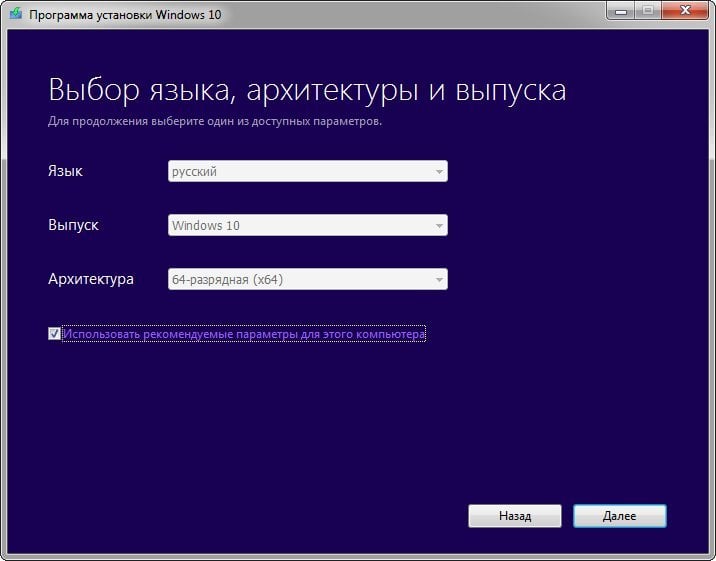
Источник: besplatnyeprogrammy.ru / Приложение Media Creation Tool
- Для Windows 11 — помощник по установке Windows 11.
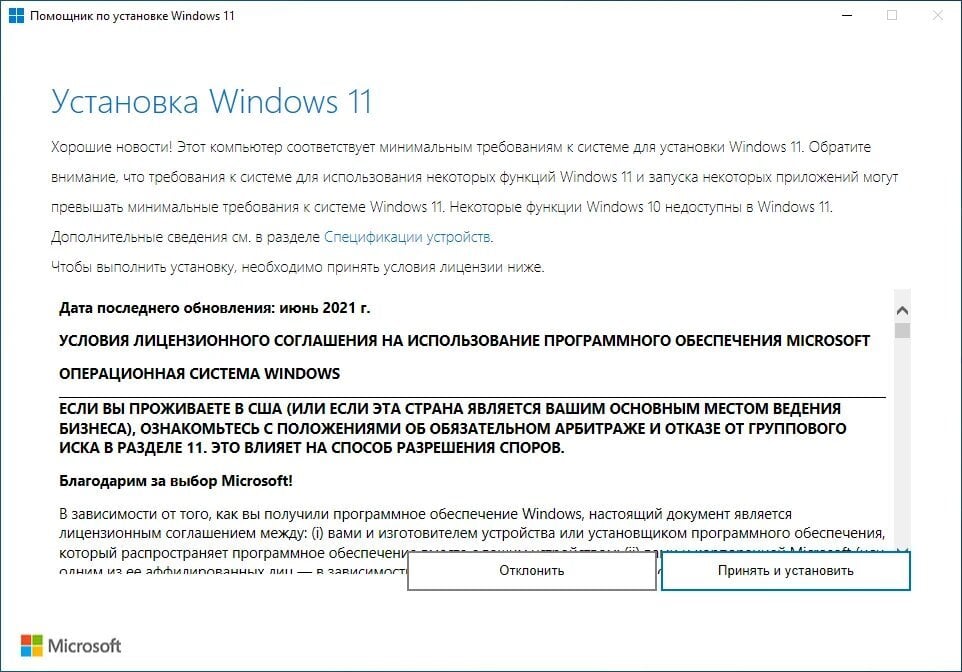
Источник: comss.net / Помощник по установке
Эти инструменты помогут обновить системные файлы и саму операционную систему. При этом ваши данные и личные настройки сохранятся.
Заглавное фото: CQ.ru с помощью DALL-E
The dreaded «blue screen of death,» infamously known as BSOD, can wreck your day. There are more than 500 BSOD error codes, but the Critical Process Died Stop Code gets the most attention.
In fairness, BSODs are much less common in Windows 10 than in previous versions of the OS, but they are still annoying when they happen. Losing the stuff you were working on is the least of your worries.
So, how do you fix this unforeseen, «critical process died» error in Windows 10? Keep reading, and we’ll explain everything.
What Is the «Critical Process Died» Stop Code?
A critical process unexpectedly stopping is responsible for the majority of BSODs. You’ll know if you’re a victim because you’ll see error code 0x000000EF on the blue crash screen.
At its most basic level, the cause is simple—a background process that Windows relies on has become corrupted. It could have either stopped entirely, or its data has been incorrectly modified.
Digging deeper, it becomes much harder to pinpoint the precise issue. Everything from iffy drivers to memory errors could be the culprit. Worse still, there are near-endless scenarios in which the BSOD could arise. Perhaps it only happens when you’re gaming, when you log into your machine, when you open a certain app, or when you wake your machine from sleep.
How to Fix the «Critical Process Died» Stop Code
The diversity of possible causes means there are several BSOD troubleshooting steps you need to work through. Let’s take a closer look at how you can fix the Critical Process Died stop code in Windows 10.
1. Restart Your PC
It’s a cliche at this point, but a simple restart can fix surprisingly many problems with your PC. In fact, this holds true for almost all tech devices, including your smartphones.
A reboot clears your memory or resources, resets your system settings, and clears your caches and other temporary files. Since the “critical process died” error comes up because of something going wrong with the process, a reboot can be handy.
So restart your PC and see if it fixes the error.
2. Run the Hardware and Device Troubleshooting Tool
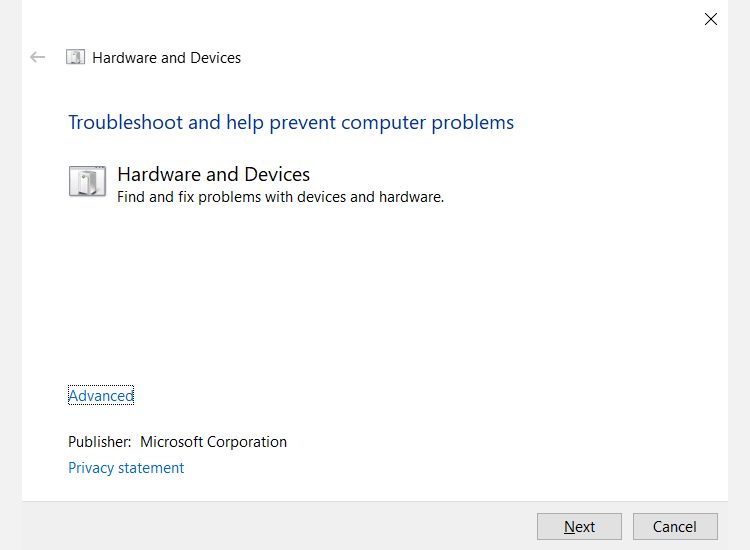
Before we move on to the more complicated solutions, let’s begin with the easiest one.
Windows now includes a broad range of specialized troubleshooting tools. One of them is specifically designed for hardware and device issues.
Unfortunately, it is no longer visible in the Settings menu. Instead, you will need to fire it up from the command line. Thankfully, it is easy to do; open Command Prompt, type msdt.exe -id DeviceDiagnostic, and press Enter.
On the window that pops up, hit Next, and your system will spend a few minutes scan for problems. It will report back with its findings.
3. Run the Deployment Imaging and Servicing Management Tool
If you’re still encountering errors, it’s time to move on to the Deployment Imaging and Servicing Management (DISM) tool. It will repair a corrupt system image.
The tool has three switches:
- /ScanHealth,
- /CheckHealth
- /RestoreHealth
We are only interested in the last one. To use DISM, open Command Prompt as an administrator using the steps described previously. When the app is open, type DISM /Online /Cleanup-Image /RestoreHealth and hit Enter.

The process typically takes between 10 minutes and half an hour. Do not be alarmed if the progress bar pauses at 20 percent for several minutes; it is expected behavior.
After the scan has finished, restart your machine. The «critical process died» error should’ve gotten resolved.
4. Run the System File Checker
The next step is to run the System File Checker tool. It’s a well-known utility that can cure a wide variety of Windows-based aliments by repaired corrupted or incorrectly modified system files.
In truth, it’s not always useful; people run it out of habit more than out of necessity. However, in the case of the 0x000000EF error code, it’s a critical troubleshooting step.
To run the checker, you will need to fire up Command Prompt as an admin. The easiest way is to run a search for cmd, right-click on the result, and select Run as administrator.

Once Command Prompt is open, type sfc /scannow and hit Enter. The process might take a while to complete.
When it’s finished, you’ll see an on-screen list of any problems and the steps that the scan took to remedy them.
Make sure you restart your computer before continuing to work.
This also helps fix the Bad System Config Info error.
5. Run an Antivirus Scan
The stop code could be caused by malware on your system. Malware can alter system files and processes and make them unusable.
You can use either Windows Defender or one of the best third-party antivirus suites for Windows of your choice. Just make sure you run a deep, full-system scan.
6. Update Your Drivers
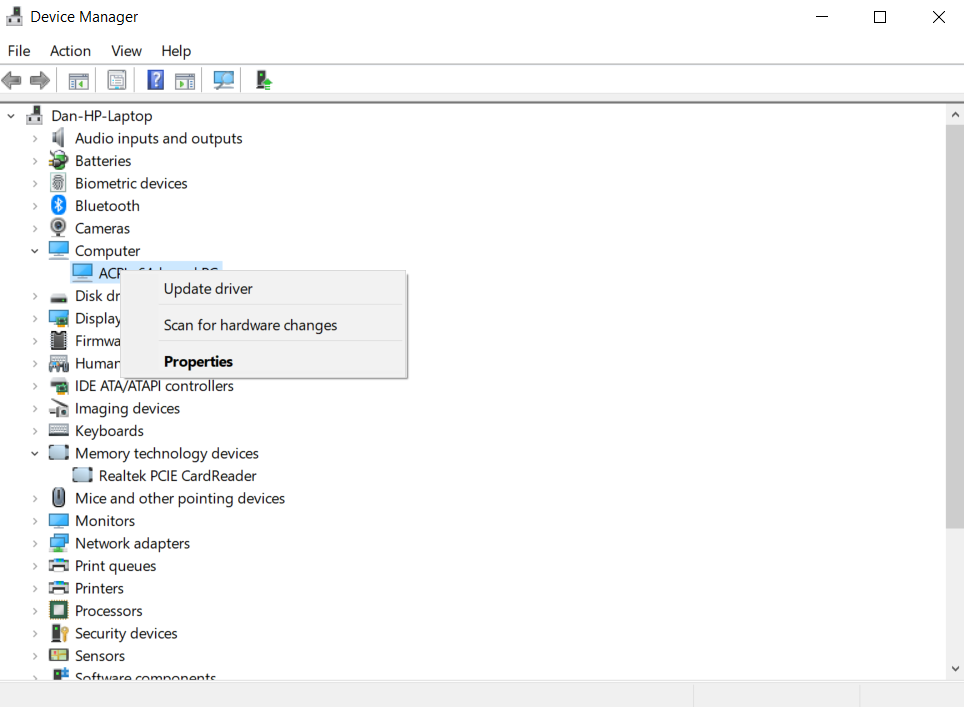
Bad drivers are one of the most common causes of the stop code. Therefore, it’s sensible to check that none of them require updates.
To check the status of your drivers, right-click on the Start tile, select Device Manager, and scan through the list to see whether any devices have a yellow exclamation point alongside them.
If you find an exclamation point, right-click on the device in question and choose Update Driver Software from the context menu.
7. Uninstall Recent Windows Updates

If your problem has only just started, a recent Windows update could be to blame. Thankfully, it’s easy to uninstall recent updates, so you can see if your issue goes away.
To uninstall an update, open the Settings app and go to Update & Security > Windows Update > Update History > Uninstall Updates. Highlight the update you want to remove from your system, then hit the Uninstall button at the top of the window.
8. Perform a Clean Boot
A clean boot is a start-up mode that uses the bare minimum number of drivers, processes, and programs. Once your computer is running, you can start to load the missing processes in a bid to isolate the problem.
To clean boot your computer, follow the step-by-step instructions below:
- Type System Configuration in the Start menu search bar and select the Best Match
- Click on the Services tab
- Unmark the checkbox next to Hide all Microsoft Services
- Click on the Disable All button
- Select the Startup tab
- Click on Open Task Manager
- In the new window, click on the Startup tab again
- Disable all the items in the list
- Restart your computer
9. Restore Your System
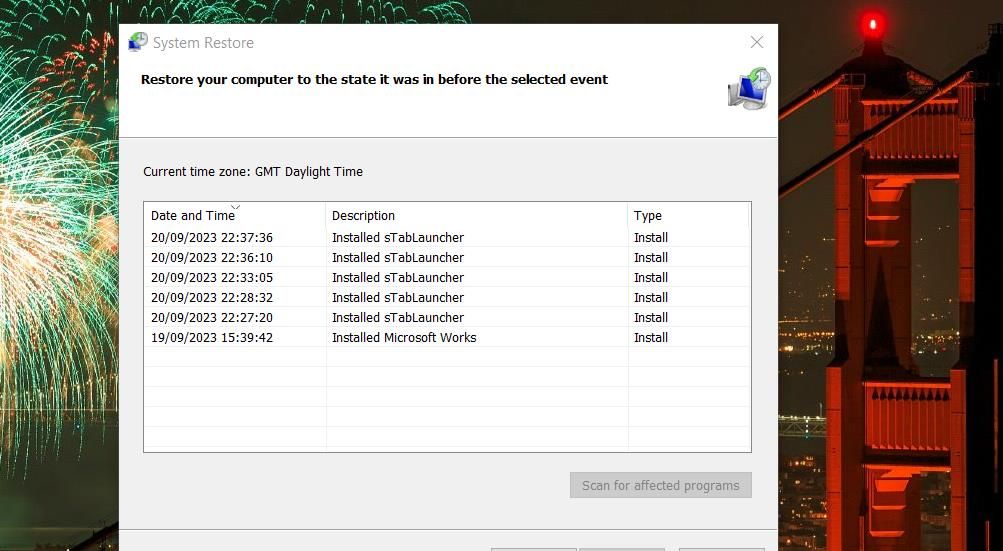
You can try to roll back your computer to a previous state using the System Restore tool. This option is only a possibility if you have enabled the creation of restore points before your stop code problems started.
To use the System Restore tool, type «restore» into the Start menu search bar and select Create a restore point. In the resulting menu, click System Restore to open the utility. Follow the on-screen instructions to choose a restore point and move your system back to that prior state.
10. Update the BIOS
As a final throw of the dice, you can try to update your computer’s BIOS.
Unfortunately, there is no standardized method to do so; it depends on your computer manufacturer. Refer to the company’s support literature for guidance.
Fixing the Critical Process Died Error on Windows
If none of the above tips fix your problem, is it time to throw your computer against the nearest wall and head to the shops?
Actually, there’s one throw of the dice remaining. The last recourse is to reset Windows or reinstall a fresh copy of Windows. Now, if that fails, it definitely means you have a hardware issue on your hands; in that case, heading to the local tech shop would be a good idea.
Whenever I try shutting down my HP Windows 10, I get Stop Code; the Critical Process died. I need to always force stop when it is 100% and then restart.
-Windows User

When a critical component of Windows can’t run properly, it may cause an error – “Critical Process DIED’ with a stop code 0x000000EF (See Image 1). This error appears with a blue screen, which may occur due to a faulty driver, malicious application/corrupt software or program installed on the system, and more. The critical process died Windows 10 error may cause the system stuck at a booting loop, even leading to a crash. It means eventually, you will end up losing the data stored on the PC. No need to worry. You can recover the lost data using a data recovery tool. Further, we share the most effective methods to help you get rid of the stop code Critical Process Died error.
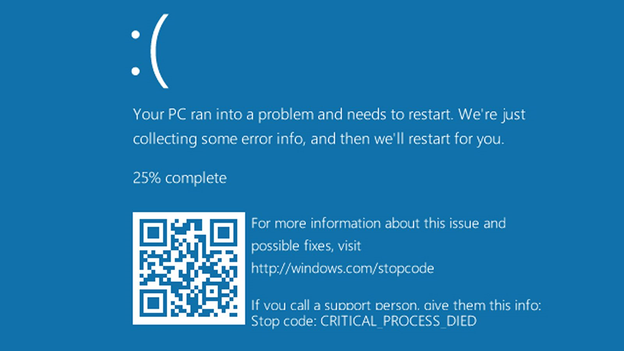
Fix Critical Process Died Error
Every time you boot your system normally, this blue screen error may show up. Before troubleshooting the BSOD error, you need to boot Windows in Safe mode.
Boot Windows in Safe Mode
Follow these steps to boot Windows in Safe mode:
a. Use USB installation media to boot your system.
b. Click Repair your system computer and click Troubleshoot.
c. On the next prompt, click Advanced options. (See Image 2)
d. Then click Startup Setting. (See Image 3)
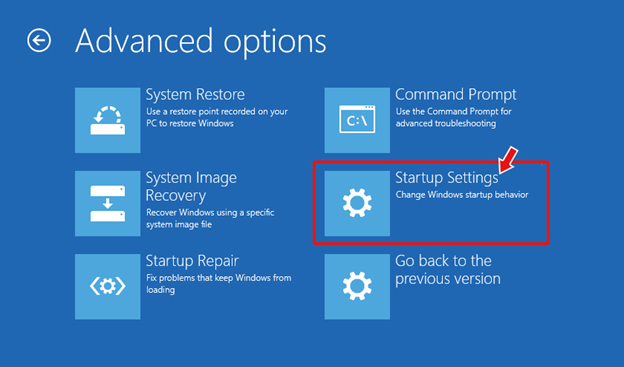
e. Click Restart and press F4 to enable the Safe Mode. (See Image 4)
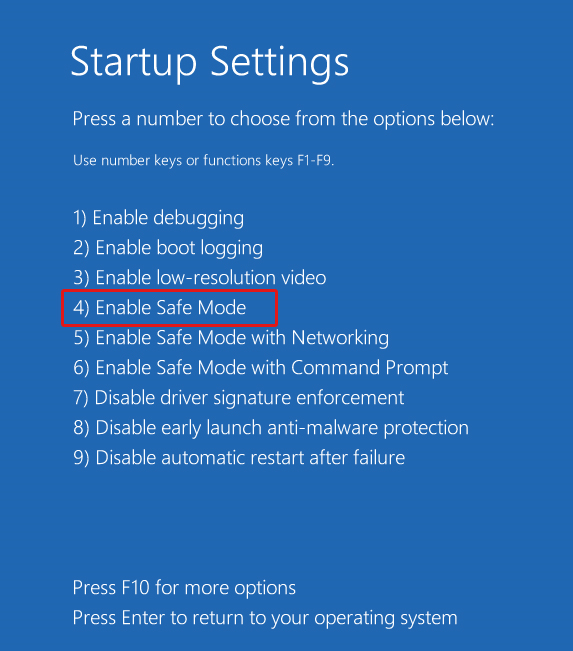
f. Once you enter in Safe Mode, proceed with the given methods to fix Critical Process Died Error in Windows 10.
Method 1: Update System Drivers
In Safe Mode, try updating the driver using the following steps to fix the Critical Process Died Windows 10 error:
a. Press Windows + X and open Device Manager. (See Image 5)
Image 5: Open Device Manager
b. Check all the drivers. If any driver appears with a yellow exclamatory mark, the driver could be corrupt or faulty.
c. Follow the on-screen instructions to Update driver. (See Image 6)
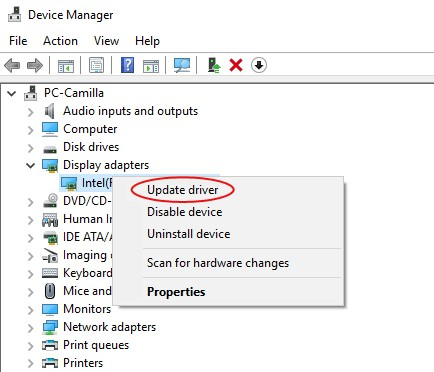
Image 6: Update Device Driver
d. Windows will Search automatically for updated driver software. (See Image 7)
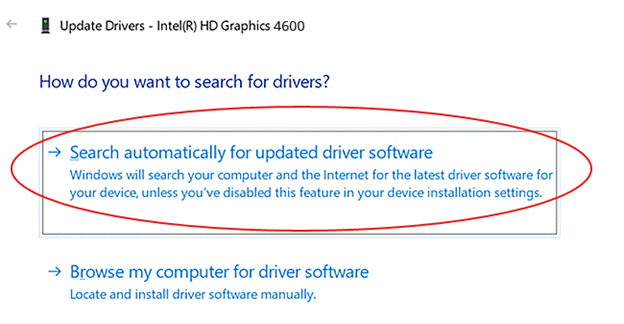
Image 7: Search automatically for updated driver software
e. If there is no updated driver available, uninstall the driver and then reinstall the compatible driver.
Method 2: Perform a Clean Boot
Corrupt system applications/software or programs may also cause the ‘critical process died’ error. You need to uninstall such applications following the given steps:
a. Open Run dialog box and type MSConfig to open System Configuration Utility. (See Image 8)
Image 8: Open System Configuration
b. Navigate to the Services tab, select Hide all Microsoft Services.
c. Click Disable all and proceed. (See Image 9)
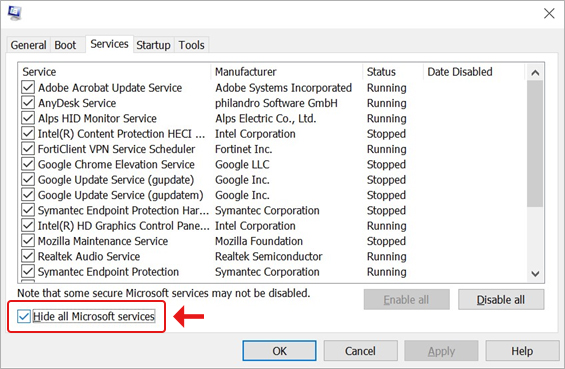
Image 9: Select ‘Hide all Microsoft services
d. Navigate to the Startup tab and click Open Task Manager. (See Image 10)
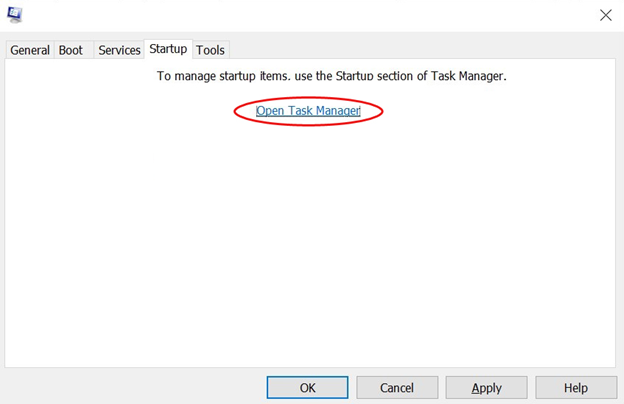
Image 10: Open Task Manager
e. Locate and select the faulty startup item from the screen, and click Disable. (See Image 11)
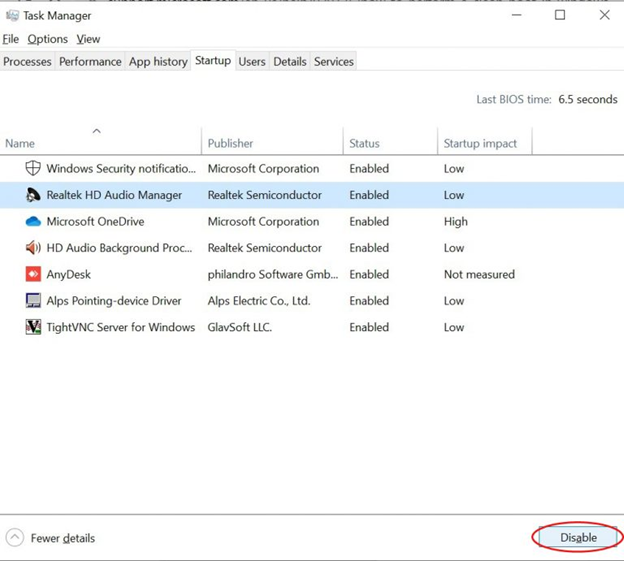
Image 11: Disable faulty startup item
f. Once done with the process, close the Task Manager, click OK and reboot the system in the clean boot environment.
g. Follow the on-screen instructions and uninstall the problematic app/program and then restart your system. These steps should clean boot Windows 10.
Method 3: Run SFC /Scannow Command
If you can’t boot your system due to this blue screen of death error, running SFC (System file checker) utility may help you scan and fix corrupt system files. Sometimes corrupt system files may also be the reason behind this error. Follow the given steps to use the system file checker:
a. Boot your system with a USB installer, created with Windows’ media creation tool, and change the BIOS setting and ensure to boot it from it.
b. When you reach into Automatic Repair setup, click Troubleshoot.
c. Follow Advanced Options > Command Prompt. (See Image 12)
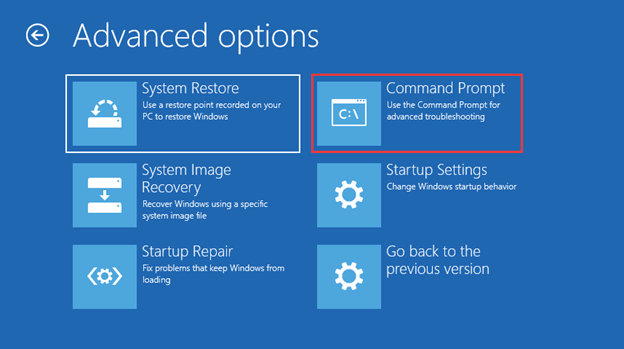
Image 12: Choose Command Prompt from Advanced option window
d. In the Command Prompt, type sfc /scannow and press Enter key. (See Image 13)
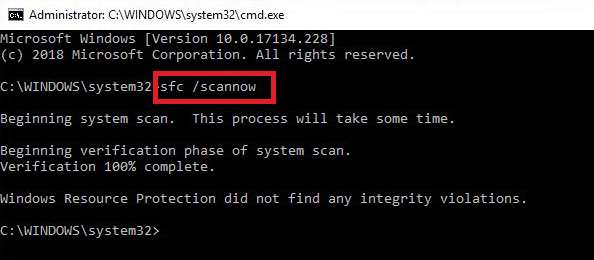
Image 13: Run SFC/Scannow Command
e. Wait until the system scan completes, and once it is done, close the Command Prompt and restart the system.
Method 4: Run DISM to Repair Corrupted System Image
If running the SFC command couldn’t fix the ‘Critical Process Died BSOD’ error in Windows 10, you may try fixing it with the help of DISM (Deployment Image Servicing and Management), as follows:
a. Open Command Prompt and click Run as administrator. Start typing the following commands separately:
Dism /Online /Cleanup-Image /CheckHealth
Dism /Online /Cleanup-Image /ScanHealth
Dism /Online /Cleanup-Image /RestoreHealth
(See Image 14)
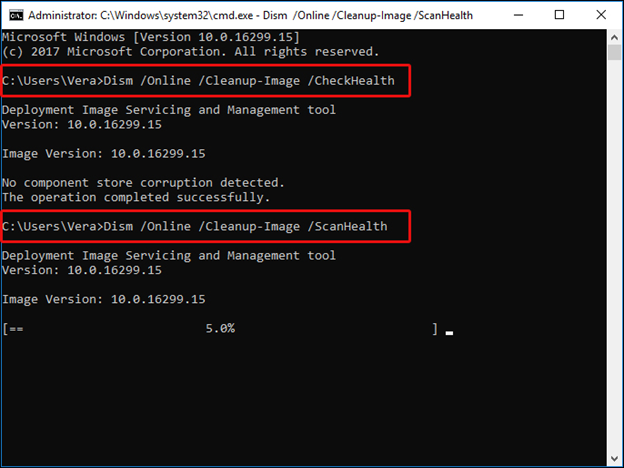
Image 14: Run DISM Command
Method 5: Uninstall Problematic Windows Update
If this ‘Critical Process Died BSOD’ error occurs after installing a specific Windows 10 update, try uninstalling it to get rid of the issue as follows:
a. Open Settings by pressing Windows + I and go to Update & Security.
b. Go to View update history.
c. Click Uninstall updates on the next prompt. (See Image 15)
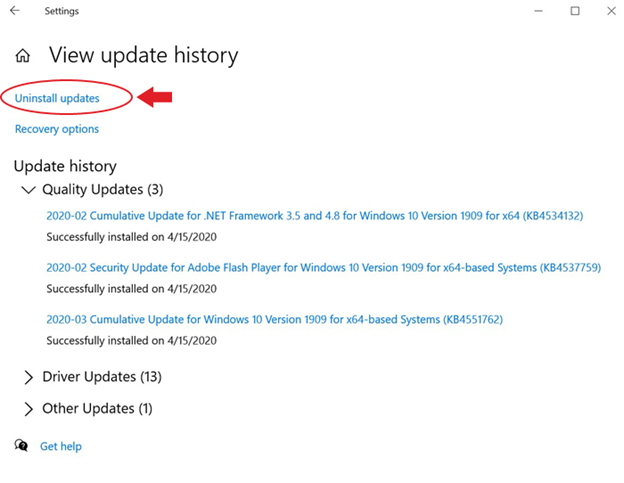
Image 15: Select Uninstall updates from View update history page
d. Find out the update you installed recently, which is causing the problem, right-click on it and click Uninstall. (See Image 16)
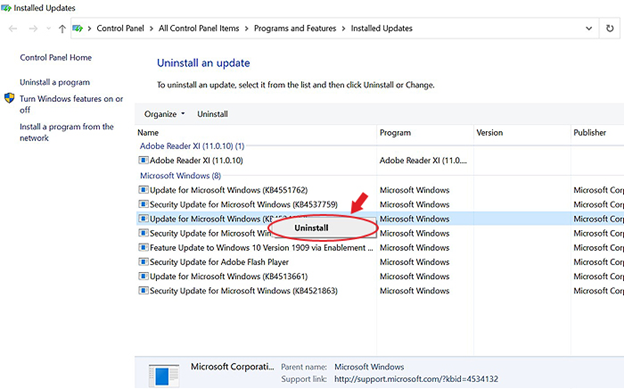
Image 16: Uninstall problematic Windows update
Method 6: Uninstall Third-Party Software
According to Microsoft support, the BSOD error might occur due to incompatibility of a recently installed third-party software such as an antivirus with the Windows device. In this situation, the error appears while using the device. You need to uninstall the software, after booting Windows in Safe mode, as follows:
- Press the Windows Start key, type Settings, and press Enter.
- Navigate to Apps > Apps & Features and sort the installed apps by Install Date.
- Select the third-party software you suspect as the cause of the ‘critical process died error’ in Windows.
- Uninstall the software and restart the system
Method 7: Rollback, Disable, or Uninstall Drivers
Like software, some third-party drivers installed on Windows 10 computers may also cause incompatibility issues and result in the stop code “critical process died”. So, you might need to identify such drives and then rollback, disable, or uninstall them, as follows:
Steps to rollback, disable, or uninstall third-party drivers
- Press the Windows Start key, type Device Manager, and press Enter.
- In Device Manager, expand the device for which you need to rollback, disable, or uninstall a driver.
- Right click the driver and click Properties.
- Select the Driver tab. Next, select Roll Back Driver & click Yes to rollback
- Or, you can click Disable Device or Uninstall Device for disabling or uninstalling the driver.
(See Image 17)
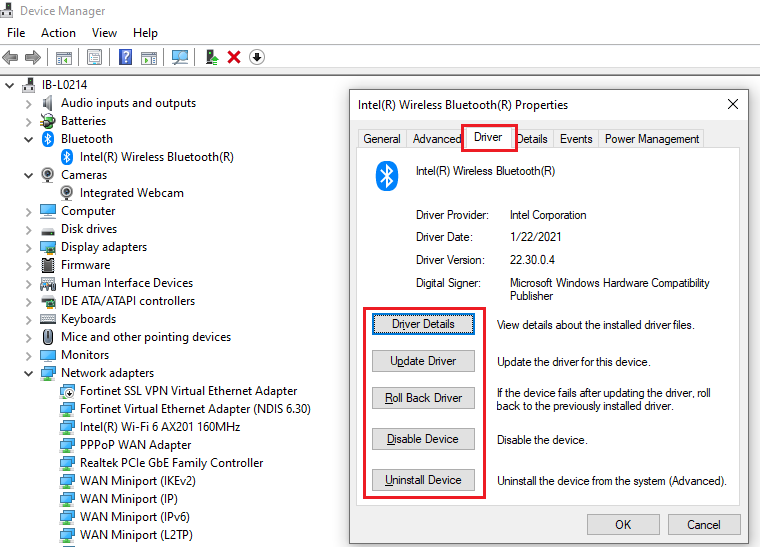
Image 17: Device Manager with options to rollback, disable, and uninstall a driver
Method 8: Run System Restore
Try performing System Restore to get rid of the error with the help of the following troubleshooting steps:
a. Use the USB installer to boot into your system. Click Repair your computer and follow Advanced options > Automatic Repair environment. (See Image 18)
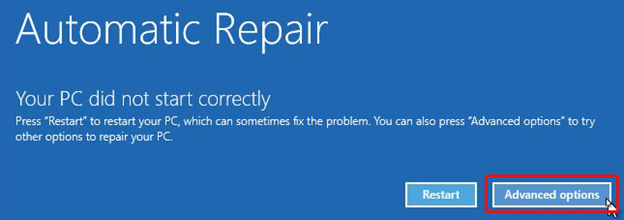
Image 18: Click Advanced option on Automatic Repair
b. Go to Troubleshoot > Advanced options.
c. On the next prompt, click System Restore. (See Image 19)
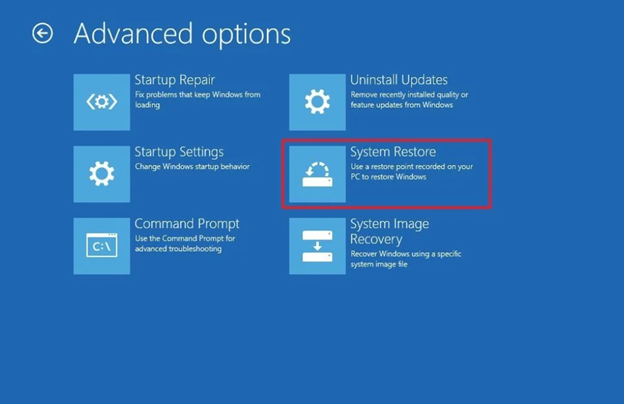
Image 19: Select System Restore
d. Click Next > Scan for affected programs.
e. On the creation of restore points, the applications will no longer be available. (See Image 20)
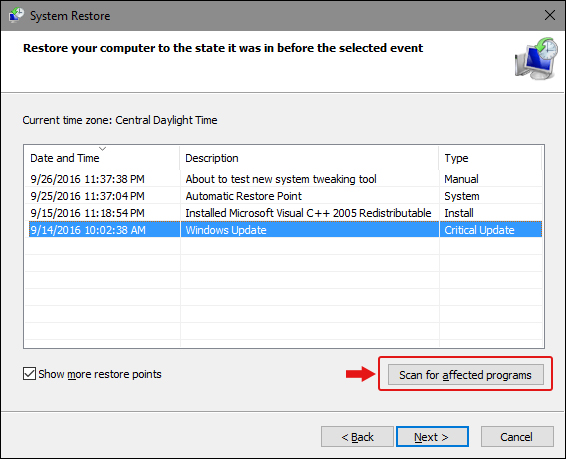
Image 20: Scan for affected programs
f. Then click Next and click Finish on the next prompt. Find if the PC is free from the error. (See Image 21)
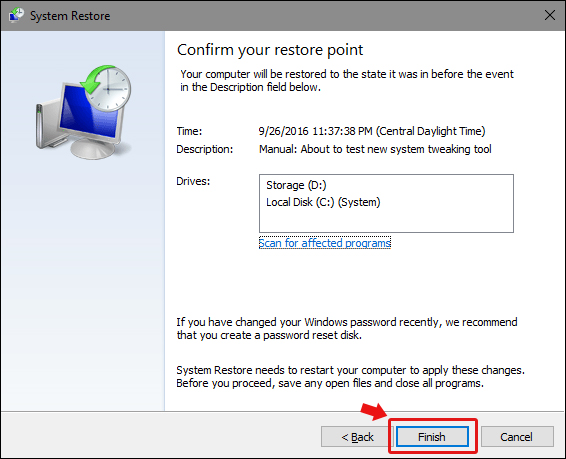
Image 21: Finish the process of system restore
Note: This method may cause data loss as it cleans up the entire system and wipes out the data stored on the system.
Therefore, it is advised to use an effective data recovery tool such as Stellar Data Recovery Professional. This DIY, easy-to-use software scans the formatted, corrupted or even crashed PC, extracts the data from it and lets you save the recovered files, folders, documents, photos and more. Not only you can recover data from Windows PCs, but also can get back your data from formatted, corrupted or even encrypted drives such as HDDs, SSD, SD, USB, and optical media as well. The tool can efficiently restore data from BSOD-affected systems. It features a ‘create recovery drive’ utility, which enables users to create a bootable media drive. Users may connect the bootable media drive to the unbootable system and retrieve the data effectively.
Method 9: Reset the PC
You can reset the PC to fix the error by removing software, programs, settings, apps, and drivers causing the error. However, you may select the files you want to keep while resetting the system. Follow the given steps:
a. Open Settings and go to Update & Security.
b. On the next prompt, click Recovery. (See Image 22)
Image 22: Click Recovery from Settings
c. Click Get Started under Reset this PC. (See Image 22)
Image 23: Get started with resetting the PC
d. Select Keep my files to save your data. (See Image 24)
Image 24: Select keep my files
e. However, it is recommended to choose ‘Remove everything’ for getting rid of faulty programs, drivers, apps, driver, etc. and cleaning up the entire PC.
f. Select ‘just remove my files’ and click Next. (See Image 25)
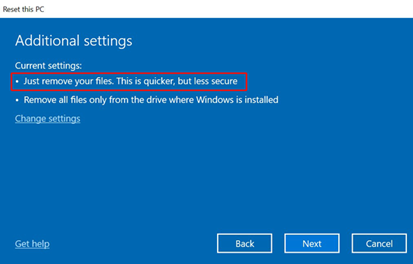
Image 25: Select just remove your files
g. Click Next on the warning message screen.
h. Click Reset and proceed. (See image 26)
Image 26: Click Reset to start the process
i. Click Continue on the next prompt and wait until the process is finished. (See Image 27)
Image 27: Click Continue
Method 10: Reinstall Windows 10
If all of the above methods fail to fix the ‘Critical Process Died Error’, you are left with nothing else but reinstalling Windows 10. While reinstalling Windows, you will end up losing the data stored on the system as the process will format the drives and will create new partitions in the PC.
Hence, if you have already recovered data using professional data recovery software such as Stellar Data Recovery Professional, you may reinstall the Windows without worrying about data loss.
Conclusion
No matter what the actual cause for ‘Critical Process Died’ error is, this blue screen of death error may cause your system to remain stuck at booting loop or even complete crash. The fixes mentioned in this post can help you get rid of the error. Though, if you don’t want to lose your important data, recover it with a data recovery tool such as Stellar Data Recovery Professional. This software can efficiently extract the data from BSOD-affected Windows PCs and storage devices.
Was this article helpful?
YES9
NO


